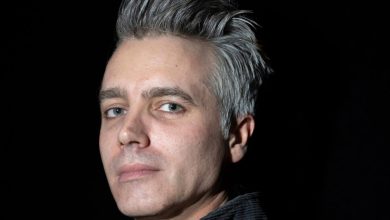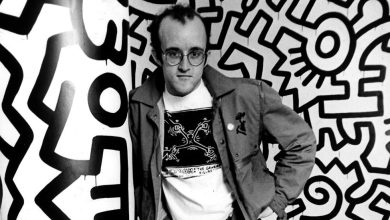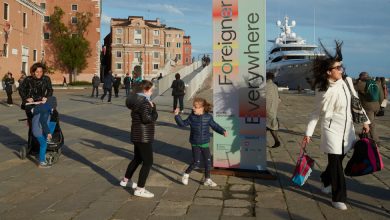It’s Gold, Baby. But Niclas Castello’s Cube Is Nothing New in Art.

The fun thing about conceptual art is that it’s totally easy to create. You can say something about the increasingly virtual way many of us experience the world, and the explosive popularity of NFTs (nonfungible tokens) — or seem to say something profound, anyway — just by staging a Central Park happening around a knee-high cube of solid gold.
At least, that’s what the German pop artist Niclas Castello has done. His “Castello Cube,” cast from more than $10 million worth of 24-karat Nevadan gold, appeared in a patch of icy slush opposite the Naumburg Bandshell on Wednesday, preceded by an over-the-top marketing campaign that included a wraparound ad in that morning’s edition of The New York Times. Related NFTs from the artist and even a new digital currency, Castello Coin, will drop later in the month. The artist did privately presell enough of the coins to finance this project, according to Marina Dertnig, a member of the production team. But Castello, 43, underlined the rarity of the actual cube by displaying it for only a single day, and by promising that it wouldn’t be sold.

When I visited, the cube was surrounded by a steady trickle of gawkers, some of whom had come to see the art and others drawn by the crowd itself. “I love a group of people staring at a box,” said Isabel Robin, an actor and tour guide.
After all, the last time New Yorkers got to see a sizable chunk of solid gold in public was in 2016-2017, when Maurizio Cattelan installed his 18-karat gold toilet, “America,” at the Guggenheim Museum.

Some visitors in Central Park were swayed by the beauty of the material. “The reflections are incredible,” said Brigitte Bentele, a watercolorist and retired educator, “and putting it there in the snow seems really inspired.” Others, like a private security guard, Jamel Rabel, were dismayed by the gap between the hyperbolic advertisements for the piece — “Never before in the history of humanity has such an enormous amount of gold been cast into a single, pure object” — and its rather more modest presence. “It’s pretty plain,” he said.
I’d say they’re both right. From a few feet away, the top face of the cube looked as slippery and delicate as a sheen of rainwater, reflecting the tree line. Stepping in close, I found a few little black marks left in the soft metal by the compressed sand in which the cube had been molded in Aarau, Switzerland. When the artist’s crew set up pink lights for their camera, the cube seemed to change color from dusky copper to bright yellow. The edges looked sharp but also, somehow, giving. There’s a reason people like gold.

Castello, who hung out at the site, was chic in black, with long hair and bright blue glasses. In the past, he created what he called “cube paintings” with canvases crumbled inside acrylic, and was involved in the European street art movement.
But does his current public work add anything to what the Romanian-born sculptor Constantin Brancusi already said about shiny surfaces in the 1920s-30s with his gorgeous abstracted bronze birds? Or to Donald Judd’s exhaustive exploration of cubes in the 1960s? Does a one-day-only pop-up display really update 1960s happenings in the Sheep Meadow, or the release of a limited-edition Supreme T-shirt, in any meaningful sense? Can it compete with the majestic lines of the saffron-orange gates Christo erected in Central Park in 2005? Does it elucidate the tension between aesthetic and commodity value, or offer a fresh insight on the gold standard 50 years after Nixon junked it?

What the “Castello Cube” really speaks to is the self-sustaining power of capital. If you have the resources to get hold of $10 or $11 million dollars’ worth of gold from a UBS Bank in Switzerland — as Castello did — and then pay a centuries-old bell foundry there to shape it into a cube, and finally to ship this cube to the most visible park in the finance capital of the Western world, you can get people to look at it, talk about it and review it — and then, in what is shaping up to be the new gold standard, sell the whole experience as an NFT.




